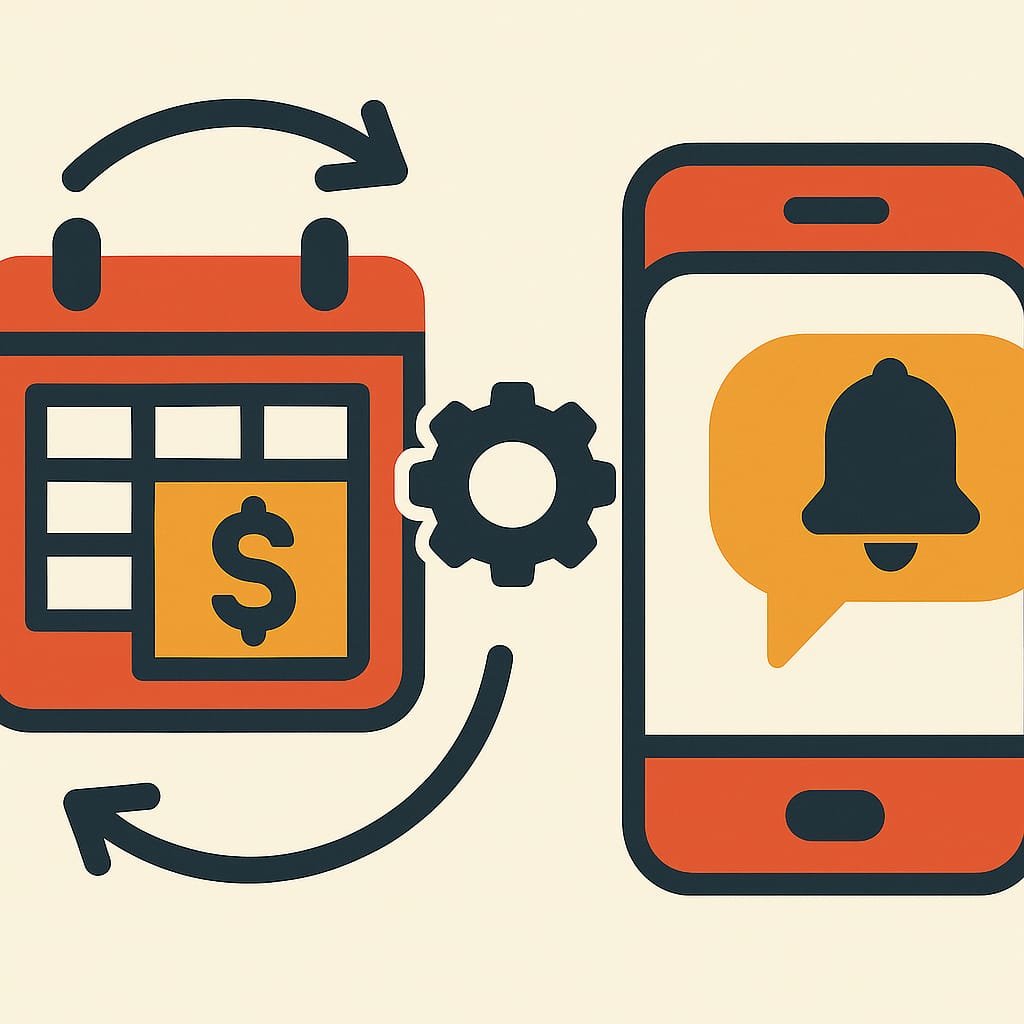SMS marketing is a powerful tool for businesses, but sending individual messages manually can be time-consuming. Automating your SMS campaigns, especially recurring campaigns, allows you to save time and ensure consistent, timely communication with your audience. Recurring campaigns—such as weekly promotions, monthly reminders, or automated reminders—can have a significant impact when optimized for efficiency and engagement.
In this blog post, we’ll explore how to set up recurring SMS campaigns and automate them for maximum impact, ensuring that you don’t miss out on important marketing opportunities while keeping your audience engaged.
What Are Recurring SMS Campaigns?
Recurring SMS campaigns are automated messages that are sent on a regular schedule, such as weekly, monthly, or at any interval you choose. These campaigns can include reminders, promotions, event notifications, or any type of content that needs to be sent consistently. Recurring SMS campaigns allow you to maintain regular contact with your audience without the need for manual intervention each time.
For example, a business might set up a weekly sale reminder, a monthly subscription renewal notification, or automated birthday messages for customers. Automating these messages ensures that your audience is continuously engaged without requiring extra effort.
Benefits of Automating Recurring Campaigns
Automating recurring SMS campaigns offers several advantages:
- Time Savings: Automating recurring messages frees up your time to focus on other important tasks while ensuring your customers continue to receive timely communication.
- Consistency: Consistent communication is key to maintaining strong relationships with your audience. Automating campaigns ensures that messages are sent on time every time.
- Increased Engagement: By sending relevant, timely messages, you can keep your audience engaged and more likely to act on your promotions or offers.
- Better Customer Experience: Automating recurring messages can help reduce the risk of missed opportunities and ensure your customers receive the right information when they need it.
How to Set Up Recurring SMS Campaigns
Setting up recurring SMS campaigns doesn’t have to be complicated. With the right tools and strategy, you can automate your campaigns easily. Here’s how:
1. Define Your Campaign Objectives
The first step in setting up any recurring campaign is to define your objectives. What do you want to achieve with your campaign? Are you promoting an ongoing sale, sending reminders for upcoming events, or nurturing relationships with your customers?
Best Practice: Make sure your objective is clear and measurable. For example, “Increase sales by 10% with a weekly promotion,” or “Send a birthday message to subscribers on their birthdays.”
2. Segment Your Audience
Audience segmentation is crucial for delivering personalized messages that resonate with recipients. Segment your audience based on various factors like demographics, behavior, or previous interactions with your brand. This ensures that your recurring campaigns are relevant and targeted to the right people.
Best Practice: Use your customer data to create tailored SMS campaigns. For example, you can send different messages to new customers vs. loyal customers or send reminders based on geographic location.
Example: “Send a special discount offer to repeat customers while sending welcome offers to new subscribers.”
3. Choose the Right Frequency
One of the most important elements of recurring SMS campaigns is determining how often to send messages. Too few messages and you risk losing engagement; too many and you risk overwhelming your audience.
Best Practice: Be mindful of how often you’re sending messages. For example, weekly promotions work well for some businesses, while others may prefer sending monthly reminders or updates. Test different frequencies to find the optimal balance for your audience.
Example: “Send a weekly discount reminder for loyal customers but limit event updates to once a month.”
4. Create Engaging Content
The content of your recurring SMS messages should be clear, concise, and compelling. Use language that encourages your audience to take immediate action. Ensure that every message has a strong call-to-action (CTA) that makes it easy for recipients to follow through.
Best Practice: Keep your content simple and focused. Offer something of value, such as discounts, early access to sales, or event reminders, and make your CTA stand out.
Example: “Get 20% off your next purchase! Use code SMS20 at checkout. Shop now: [Link].”
5. Automate the Process
Once you’ve defined your objectives, segmented your audience, and created your content, it’s time to automate your recurring SMS campaigns. Most SMS marketing platforms, like Mobiniti, allow you to schedule messages in advance, so you don’t have to worry about manually sending each one.
Best Practice: Use a platform that allows you to schedule recurring messages based on your chosen frequency. Automation ensures your messages are sent on time and consistently without any additional work on your part.
6. Monitor and Optimize Your Campaigns
Even with automation, it’s important to monitor the performance of your recurring SMS campaigns. Track metrics like open rates, click-through rates (CTR), conversion rates, and opt-out rates to assess how well your campaigns are performing.
Best Practice: Regularly review your campaign data and optimize your messages for better results. Adjust your frequency, content, or targeting based on what your audience responds to the most.
Example: “If your CTR is low, test different CTAs or promotions to see which generates more engagement.”
Best Practices for Recurring SMS Campaigns
To ensure the success of your recurring SMS campaigns, here are some additional best practices to follow:
1. Keep Your Messages Short and Concise
SMS is a short-form communication channel, so your messages should be brief and to the point. Avoid long paragraphs or complex language that may confuse your audience. Stick to one message per SMS.
Best Practice: Aim for messages that are 160 characters or less and focus on a single key message or offer.
2. Personalize Your Messages
Personalized messages are more likely to engage your audience and increase conversions. Use customer data to make each message feel more individualized and relevant.
Best Practice: Use dynamic fields to personalize your messages. Include the recipient’s name, past behavior, or product preferences to make the message more relevant to each recipient.
Example: “Hi [First Name], we thought you’d love this! Get 10% off your next order of [Product Name].”
3. Always Include an Opt-Out Option
Compliance is essential in SMS marketing. Always include an opt-out option in every message to allow recipients to unsubscribe if they no longer wish to receive SMS updates from you.
Best Practice: Include clear instructions like “Reply STOP to unsubscribe” in all of your recurring messages.
Example: “To stop receiving text messages from [Your Company Name], reply STOP.”
Conclusion
Automating your recurring SMS campaigns allows you to save time while ensuring consistent communication with your audience. By setting clear goals, segmenting your audience, creating engaging content, and optimizing your campaigns, you can maximize the impact of your SMS marketing efforts.
Ready to start automating your SMS campaigns? Learn more about how Mobiniti’s SMS platform can help you streamline your recurring campaigns and drive better results!



